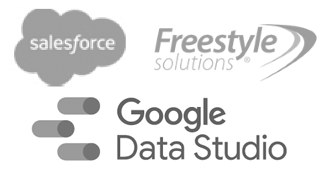Do these objections to RFM analysis sound familiar in your organization?
“We mail the whole file – we can’t afford not to”
(Generally the fear here is that RFM might screen out important responders)
“More than half of our buyers are one time customers – RFM can’t handle that”
(The implication here is: why score one time customers if they all end up with the same
Frequency score?)
“We have too many exceptions in our selection process to use a generic RFM approach”
(This seems to be a variation of the time-honored maxim “we are unique.”)
“Most of us are really people with merchandising passions – we like finding products with huge margins. Performing RFM is just not a high priority.”
Here are 4 solutions to overcome these objections.
- “We mail the whole file – we can’t afford not to.”Go ahead and “mail the whole file” (at least some of the time), but try RFM in the following ways; the important information you receive back may change many opinions about RFM. Embed each customer’s RFM score as part of their source code, to determine later (with back-end response analysis) which of your RFM cells are the highest responders.
- “More than half of our buyers are one time customers – RFM can’t handle that.”Use RFM to version the message in your mailing. For instance, lapsed customers with a low RFM score should receive a different message than your high RFM customers (perhaps including a discount to win them back).One-time customers can still be scored using RFM. First, perform Recency scoring. Then, if 60% of your customers ordered just once, and you are scoring using quintiles, break the 60% up into 3 equal segments of 20% each. But give a “tie-breaking” higher frequency score to the customers in the segment who are more recent.
- “We have too many exceptions in our selection process to use a generic RFM approach.”Between “mail the whole file” campaigns, add a more targeted, test mail campaign to selective segments based on RFM scores. For instance, you may want to move your near-Gold customers up to a Gold status.Deal with the exceptions in your customer data head-on. Use query filters to screen out “noise level” in your data, before performing RFM scoring.
- “Most of us are really people with merchandising passions – we like finding products with huge margins. Performing RFM is just not a high priority.”Most execs understand the 80/20 rule and the importance of targeting the 20% of customers that yield 80% of sales. RFM results in better targeting, higher customer satisfaction, and yields savings in postage and printing that go right to the bottom line. What could be a higher priority?
 Professor’s Corner:
Professor’s Corner:
RFM is usually understood to be a consumer marketing tool, but consider it as a B2B metric as well. In our WiseGuys application, we go beyond Individual RFM scoring to calculate Site RFM.
Site RFM evaluates the account as a whole – and may show that what appeared to be multiple small customers are indeed parts of a larger customer at the same location! This is especially useful for B2B marketers with high concentrations of individuals at a specific organizational site, who purchase independently.
For instance, Melinda Gates from Microsoft may order only once, and will appear to be a small customer of yours (as displayed by Individual RFM scoring). She might be ignored by marketing staff as a “small fish.” But WiseGuys will group her order with Bill Gate’s purchases into a Site RFM score, and may show that Microsoft is a very large customer. Understanding who your customers really are ensures your marketing staff will give Melinda Gates the royal treatment with your next promotion.
Finally, we recommend an excellent resource on B2B RFM – the text from Libey and Pickering, “RFM and beyond.”
As always, call today to take advantage of our free 15-minute consulting session, “The Professor is in” at 703.941.8109.









